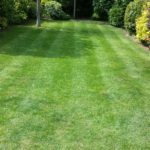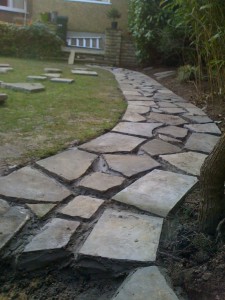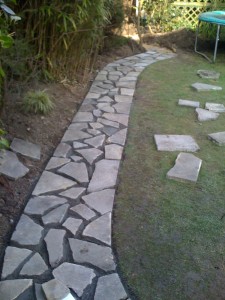Posted in
Gardening advice on August 22nd, 2009 by GS —
Comments Off on Autumn Gardening
Autumn Gardening
Autumn is the season when all the hectic flowering and reproductive activity in the garden is over. The grass growth slows down and stops and the leaves on the trees start to change colour and fall to the ground. At this time of year, the seed heads and berries look their best and the growing season comes to an end. This is when the garden needs to be “put to bed” and left looking neat and tidy for the winter months.
Early in the autumn, it is necessary put all tender plants under cover, to protect them from the first frosts. The soil is still warm at this time of the year, which makes it an ideal time to plant or move evergreens and conifers. There is other planting that can be done at this time too, including spring bedding, such as wallflowers and polyanthus and also spring bulbs.
As we move into mid-autumn, an important job is to tidy perennials, removing dead stems but leaving seed-heads for the birds to eat. Now is a good time to plant deciduous trees, shrubs and climbers. As long as the soil is not too wet, this can also be the perfect time to lay new lawns. Otherwise, just make sure that everything in the garden is tied down and secure and that nothing can blow about and cause damage.
Moving towards winter, late autumn is the ideal time to plant shrubs, roses and hedging plants sold with bare roots. If your garden is anything like mine, you will have been clearing leaves from mid-September. Late autumn, however, will see the last of the falls and you should be able gather the remaining leaves and add them to your compost heap. Gardening in London, especially in my area, Barnet, is made easier by the council’s green waste collections. The down side is that I don’t have a compost heap but, with limited space, at least I know my green waste is going to create compost!
Late autumn is the time to plant tulips and hyacinths. You can also use this time to move deciduous trees and shrubs – but only once they’ve lost their leaves. Also at this time, take hardwood cuttings from shrubs and roses. These cuttings, which can be cut from the root, stem or leaf of a plant, can be made to produce their own roots so that it can become a new plant exactly like the parent.
One of the most important aspects of a London garden is often the lawn, however small. The autumn is a great time to examine it for summer wear and tear and carrying out work in September will allow the grass to react to treatment before it gets too cold. One of the most common problems with the lawn is the build up of “thatch”. This is old grass stems, dead moss and other debris that can build up between the grass roots and foliage. Too much thatch can impede water and fertiliser penetration, causing the lawn to look unhealthy and uncared for. Scarifying is the name of the technique used to get rid of thatch and involves vigorous but careful raking of the lawn using a spring-tine rake.
Every three to four years, it is a good idea to aerate the lawn. This is the process of spiking holes over areas of the lawn that become compacted and is basically to promote better drainage. For small lawns, this can be done with a garden fork, spacing holes 10-15 cm (4-6 in) apart. On clay or waterlogged soils, a hollow-tine aerator, available from most DIY stores and garden centres, should be used. This latter method extracts small plugs of soil from the lawn, which should be swept up and followed a sandy top-dress to improve air and moisture penetration.
Top dressing corrects surface irregularities and improves the texture of difficult soils, consequently encouraging greater rooting and thickening of turf. A simple mixture is three parts sandy loam, six parts sharp sand and one part compost or leafmould (by volume). Apply 2-3kg per sq m, working the dressing in well with the back of a rake.
In addition to be a part of the aeration process (above), top-dressing the lawn can help to smooth out surface irregularities and improve the texture of difficult soils. This in turn encourages greater rooting and thickening of the turf. Three parts sandy loam, six parts sharp sand and one part compost or leafmold (measurements by volume), forms a simple but effective dressing. Apply 2-3 kg per square metre of lawn and work the dressing in well using the back of standard rake.
As you can see, autumn is a very busy time in the garden but the work put in here will be well-rewarded in the spring and summer next year!




